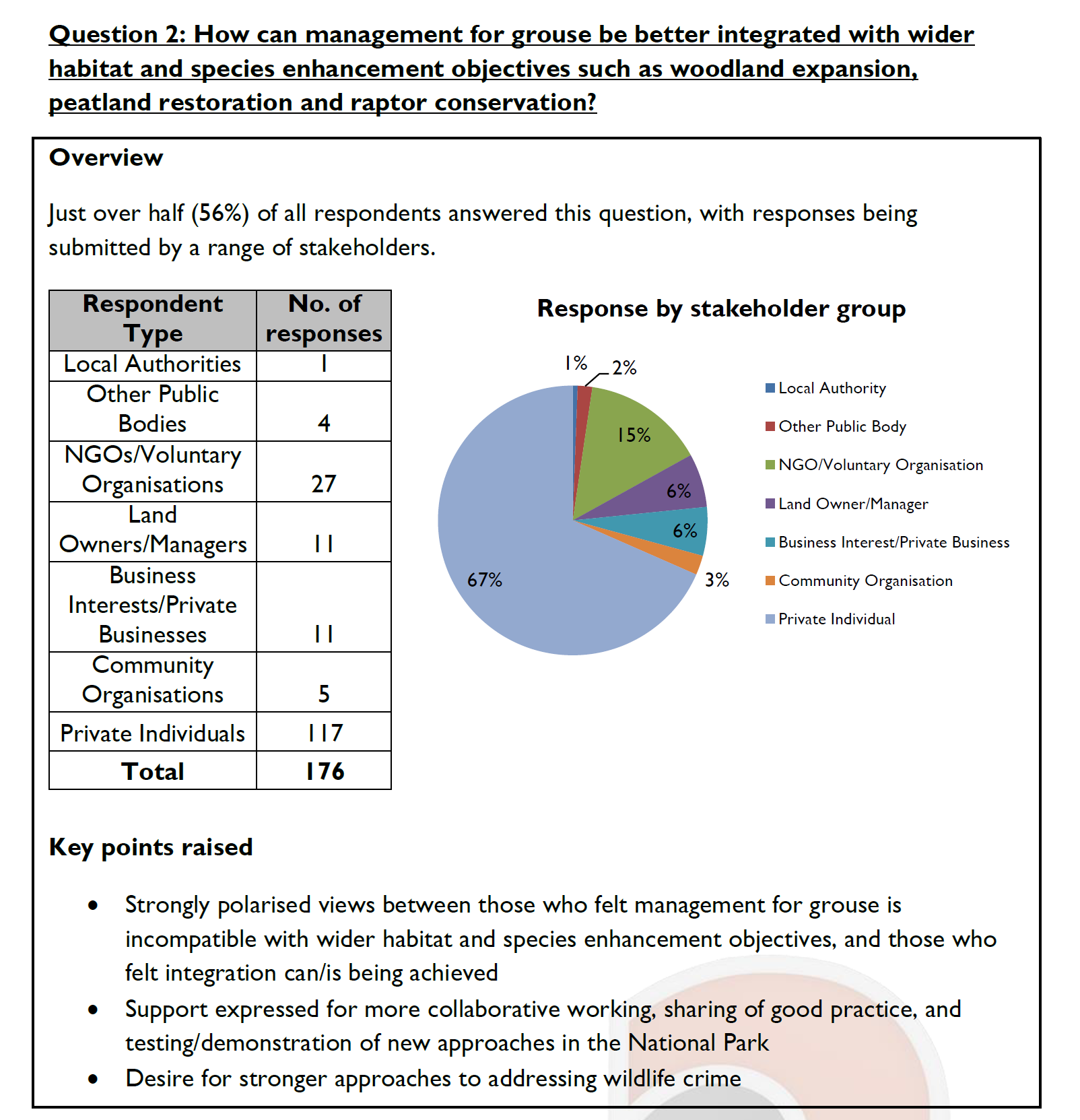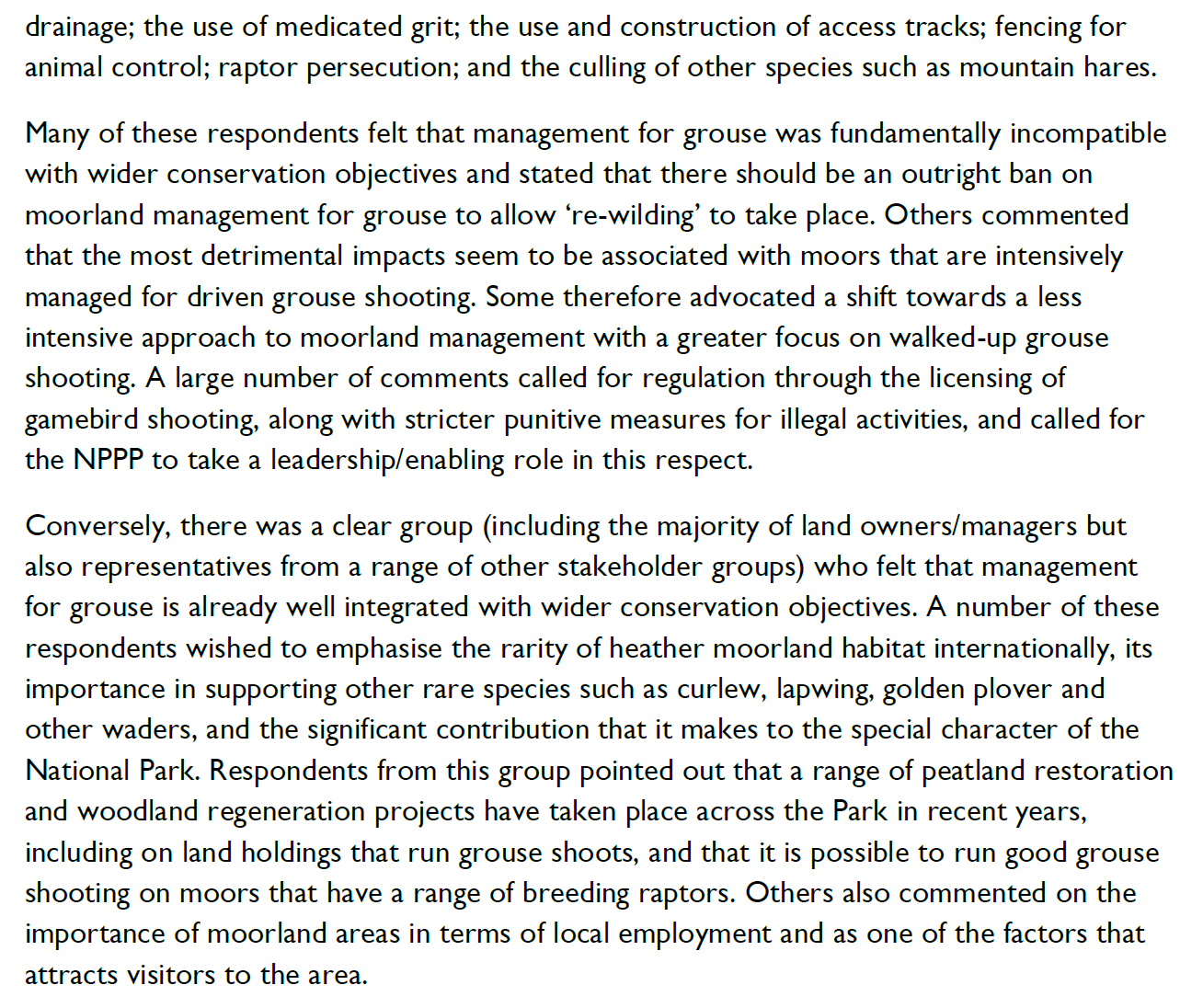
I was too caught in commenting in the Loch Lomond National Park Authority Board Meeting in December (see here) to attend on the Cairngorms National Park Board meeting which took place the Friday before. Unfortunately, the way our National Parks operate – which is in the last century – its impossible to find out what happens at Board meetings, often until months later, unless you were there. While the CNPA is more open than the LLTNPA there is still a serious democratic deficit.
The most important item on the agenda was a report on the Big 9 consultation, the major issues the CNPA had identified for consultation on the new Park Partnership Plan (see here). This is supposed to guide the work of all the public authorities and agencies that operate in the Cairngorms National Park for 2017-22. Neither the summary of the responses (see here) or the Report to Board Members (see here) made any recommendations about how the responses should inform the final plan but instead under “next steps” said that between December and February there would be “Discussions with partners and board on key issues/topics”. I found this strange, that Park staff did not offer a single recommendation to Board Members on how they should respond to the representations made in the consultation. Perhaps staff were waiting for a steer from the Board, and perhaps Board Members did this at the meeting? But, if so, the vast majority of respondents to the consultation simply won’t know what that steer is until a minute appears. This is because most respondents are not directly involved in the delivery of the Plan and therefore are not classed as partners.
Even of those who might be classed as partners, its not clear who will be consulted and who not. Basically what is going to happen is that those with power in the National Park – who are not the same as those with an interest in the National Park whether visitors or residents – will be deciding behind closed doors how our National Park should be managed in the next five years.
How should the responses to the consultation be evaluated and weighed?
The consultation summary is 128 pages long and contains much interesting information, including many good ideas of what the CNPA could and should be doing. I even recognised a couple of my own! So, I am not doubting that the staff concerned have extracted and listed suggestions from the consultation – that they took the first steps in undertaking a professional job. The problem I believe is the summary report is a compilation, without any proper analysis which should inform how those responses might be treated.

While the responses to the consultation have been classified – the organisations who responded are listed at the end and I found that worth reading just to appreciate how many NGOs there are now representing hunting interests (over eight) – there is no commentary about what interests responded to which questions or how representative the people and organisations who responded might be. It appears from reading the response summary, for example, that a large number of responses from individuals were about raptor persecution but there is no way of telling whether those people simply responded to the conservation questions and the extent to which this interest accounts for the lower level response rate to other questions. An overall analysis of who responded to what questions would have helped show how many respondents were concerned with specific issues and how many with the Park as a whole.
As significant an issue is how responses should be weighted, the need for which is shown by how the report treats conflicting views such as over grouse moor management:

The above, from the covering Report to the Board could suggest there is a balance between these competing views and imply that the Park Board’s role is to find a way between the two. The Summary Report, if you you analyse it, shows something rather different:


So,what was the number of people who did suggest changes to grouse moor management, both individuals and those represented by organisations and how does this compare to the numbers who thought current grouse moor management did meet conservation objectives? The second paragraph says the majority of landowners/managers and “representatives from a range of other stakeholder groups” thought current grouse management basically meets conservation objectives. You will see from the diagram at the top of this post that 11 (out of 14) landowners responded to the grouse moor management question. So that’s maybe 7 or 8 landowners being weighed against how many members of the conservation organisations? Ten of thousands at a rough guess. Who were the representatives from other stakeholder groups who supported the landowner position and how many of them were organisations set up to represent landowner interests such as Scottish Land and Estates, which is classified under business interests, or the Scottish Countryside Alliance and Scottish Gamekeepers Association which are both listed under NGOs? The failure of the CNPA to be more open about this suggests something else is going on and this is not an even playing field.
The CNPA needs to get off the fence
Deciding how to weight responses to consultations, let alone deciding how to respond to them, is a complex question but consultations are reduced to paper exercises if they become, as in this case, just a list of points made. The CNPA needs to decide what weight its going to give to the thousands of people represented by conservation and recreational organisations compared to the landowner with the £ in their pocket and, just as fundamentally, find ways to include these interests as partners.
What the report also fails to do is relate responses to the Park’s statutory objectives – so does the CNPA agree with those landowners who claim current grouse moor management is in accord with its conservation objectives or with those who are saying its not and why? CNPA staff should have been presenting the evidence for this to allow the Board to take a view but instead says “further detailed consideration will be required”. In other words this is going to take place behind closed doors and a final plan will appear at the Board Meeting in April just before it goes to the Minister. The danger is the current approach of the CNPA, which is marked by a reluctance to do anything which might disturb the status quo in terms of landowning interests, will continue.
The CNPA also needs to be brave. What was most interesting to me about the report – and it was one thing highlighted by the report to the Board – that transport connections to the National Park, and more particularly, public transport impact on many of the objectives in the Plan. The inference is that there needs to be a radical new transport plan which would enable people without cars or who would prefer not to use them to get to the National Park. This would mean significant public investment, in fact just the sort of investment that would create for a time better paid jobs in the Park. Proposing this would also however be a challenge to the Government, which for example has plans to upgrade the A9 but not the train line from Perth or Inverness. I suspect all we will see in the new plan is some minor proposals.
I believe that money, or rather lack of it, will account for much of the shortfall between aspiration for the National Park, which may be shared by some Board Members, and what appears in the plan in April. The consultation paper gave no indication of what resources the CNPA or its partners would commit to delivering the plan and there was still no indication of this in December. This is entirely the fault of public authorities because under neoliberalism they simply don’t know what their budget will be from one year to the next. It makes five year plans almost pointless. So, I would like to suggest a new type of Partnership Plan, one that sets what the Park would ideally like to achieve over 5 years and and resources that it and its partners needed. This and the Park’s performance targets would then be adjusted each year to reflect what resources were actually available.

So what all that flannel amounts to is that the toffs get their way. Nothing here about the public outcry and petition to Holyrood about the hare slaughter, no view on grouse moors mentioned except landowners’. Mass killing of hares and grouse, illegal killing with impunity of raptors, snares, moor burning, plenty more second homes for the well heeled, no accountability for the grotesque mess of Coire Cas, no information on how established montane woodland is going to appear in five years ~ this is our flagship national park.